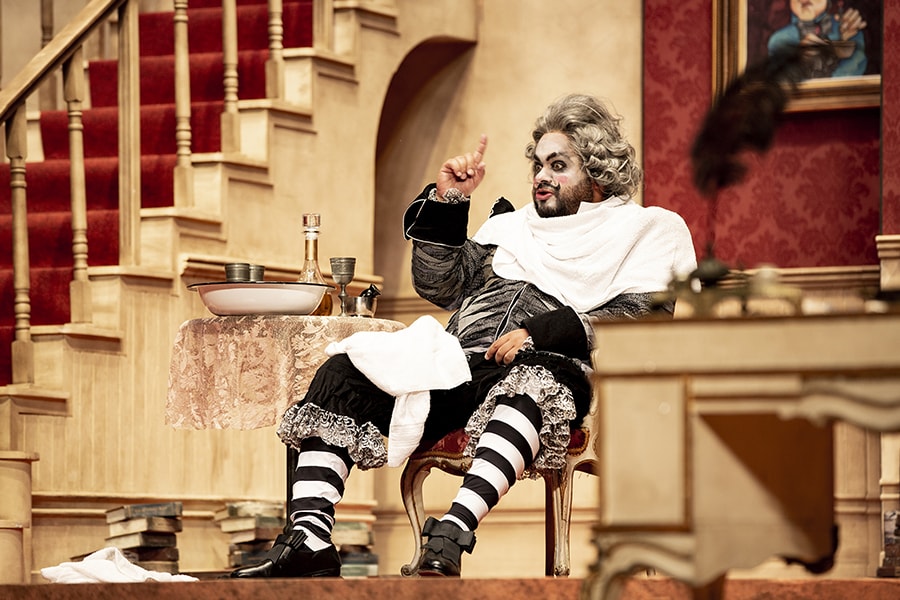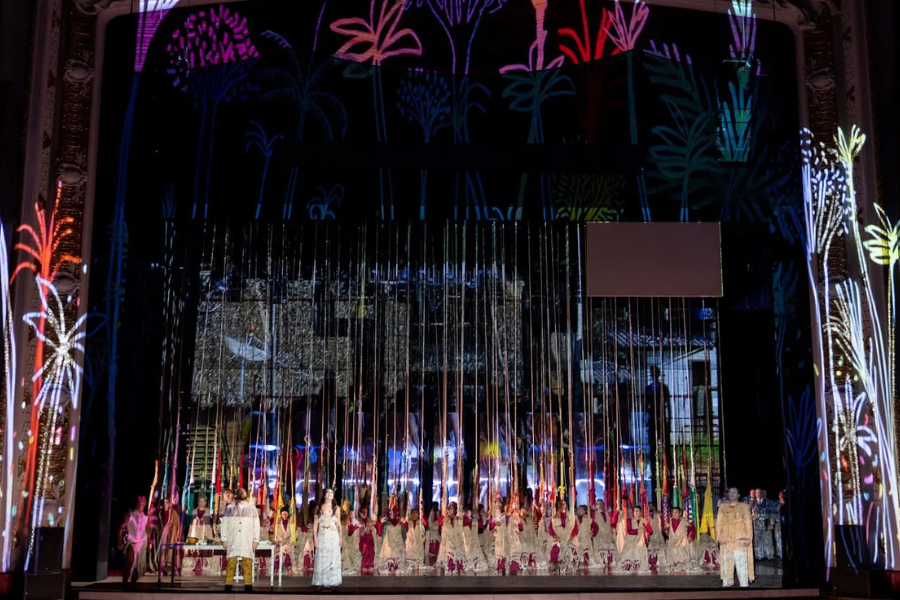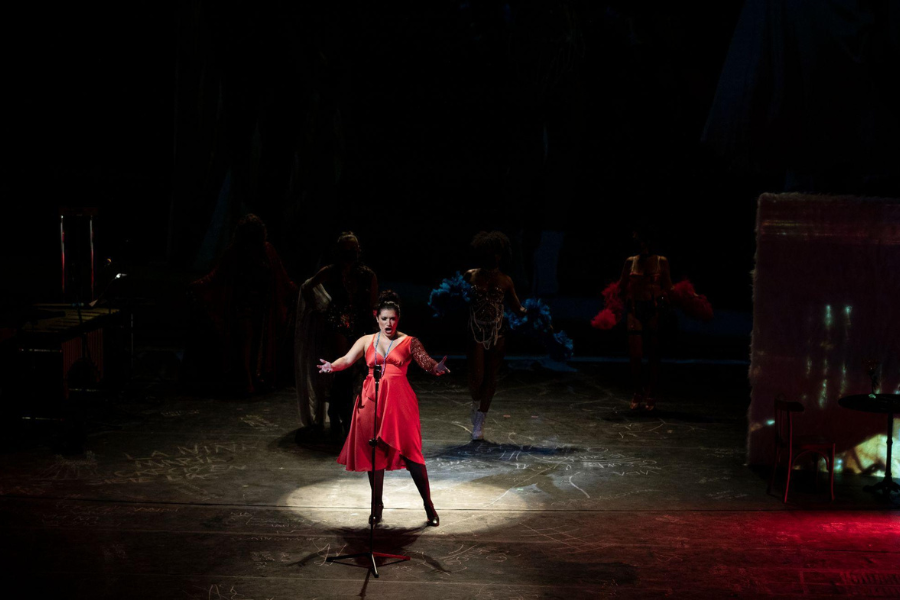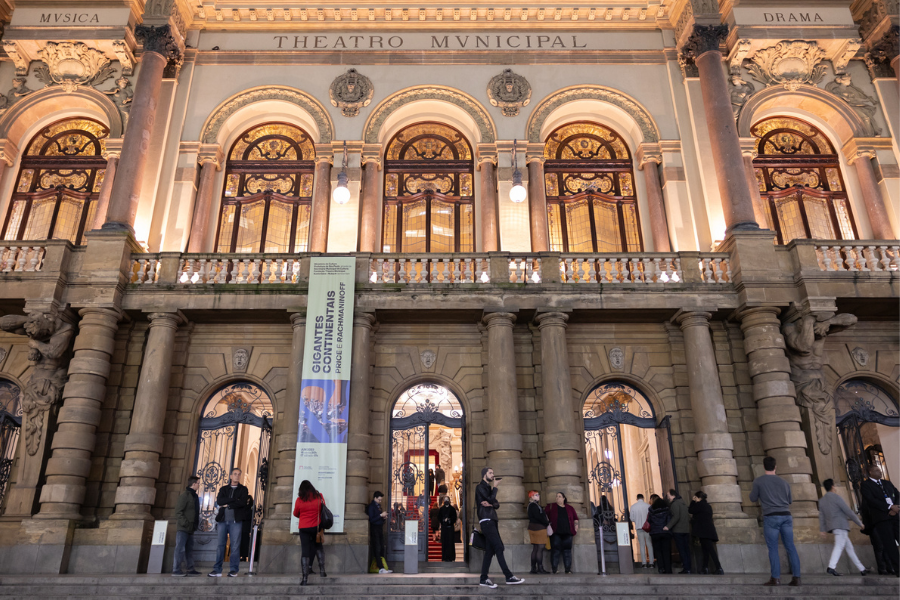Theatro Municipal de São Paulo starts its Opera Season 2019 with premiere of Il barbiere di Siviglia

The Theatro Municipal de São Paulo begins its opera season 2019 with the opera buffa par excellence Il barbiere di Siviglia by Rossini, from this 14th to the 21st February under the musical direction of Roberto Minczuk and the régie of Cleber Papa.
The opera season 2019 of the Theatro Municipal de São Paulo begins with one of the most famous comic operas: Il barbiere di Siviglia by Gioachino Rossini, under the musical direction of Roberto Minczuk, stage and costumes and scenarios of Cleber Papa signed by José de Anchieta. The functions are performed on days 14th, 15th, 16th, 19th, 20th and 21st at 8:00 p.m., and on day 17th at 6 p.m.
In the plot, the Count of Almaviva falls in love with Rosina. However, the young woman has a tutor, Dr. Bartolo, who keeps her trapped inside the house, surrounded by servants and musicians. To get close to the beloved, Almaviva relies on the help of Figaro, who sells wigs to Rosina and makes Bartolo’s hair and beard. From this, several fanciful and hilarious plans emerge that have amused the public for more than 200 years.
The baritone Michel de Souza will be Figaro, having already performed the Count of Almaviva for the Opera of Scotland in the opera Las bodas de Figaro, by Mozart. David Marcondes takes turns with him. Marcondes is a member of the Municipal Choir of Lyric of São Paulo and, in recent years, the baritone has excelled in the roles: Marullo, in Rigoletto (2014), Amonasro, Aida (2015) and Zurga, Os. Pearl fishermen (2017).
The tenor Jack Swanson (Conde de Almaviva) makes his debut in Latin America. At age 26, a native of Minnesota (United States), Swanson is growing in the international market. After the Sara Tucker Study Grant, she received the Study and Career Scholarships from the Richard Tucker Music Foundation, an important award given to young singers at the beginning of their careers.
Among the newcomers to the opera at the Theatro Municipal in São Paulo are Anibal Mancini (Count of Almaviva) and the sopranos Débora Dibi and Denise Yamaoka, who take turns playing Berta.
Like Dr. Bartolo, there is the bass Sávio Sperandio. With experience in the role, he has played the same character in the Teatro Colón in Buenos Aires (2005), the Opera Festival in Ercolano / Italy (2007) and the Teatro Real de Madrid (2008). They alternate the paper with the singer Saulo Javan. He has already appeared at the Theatro Municipal de São Paulo in the operas The Rake’s Progress, Don Giovanni, La Bohème, Falstaff, Salomé, among others.
ABOUT THE PRODUCTION
The work of Gioachino Rossini debuted in 1816. With a libretto by the Italian writer Cesare Sterbini, it is inspired by a work by the French artist Pierre Beaumarchais. This opera was staged at the Municipal for the last time in 1995. In more than 100 years, the historical scene of São Paulo accumulates about 36 assemblies. According to the conductor Roberto Minczuk, the worldwide success of the work is due to its lightness. It also points out some characteristics of the composition. “The music is virtuoso and impresses with quick technical passages, both on the part of the soloists and the orchestra, and it is interesting to use the instruments, the horn, the flute, the clarinet, vocally and the instrumental voices when he wants the virtuosity, the articulation and the emotion that history asks “, completes Minczuk.
For the program Ópera Curta, of the Secretariat of Culture of the State, the director Cleber Papa has returned to read Il barbiere di Siviglia. One of the differences of the assembly in the Municipal Theater will be a new dress for some characters considered “secondary”. “We are not reinventing the opera, but creating situations that fit perfectly with the way in which the story proposed by the composer is told.” I brought my version of the reasons that led the character Ambrogio to have so much sleep and extended the stage presence of Berta, a The maid who gains other dimensions in the show, “he adds.
Papa invited the director, set designer and costume designer José de Anchieta for this production. “I am very pleased to work with him, especially for being an artist with a long career.” I proposed that we move to a scenographic abstraction that recreates the atmosphere of Seville (it even has an Andalusian flag), with its ups and downs, balconies, large windows , etc. “, he says. The two acts are divided between a villa in Seville and the house of Rosina.
In total, there are 75 costumes in this production. “As for clothing, I did not try to stick to 1890, 1870. I mixed it up, I took it a little further and made some progress so as not to get stuck in an era.” Cleber wanted something simpler, more creative, basic elements of the season: the coats, the gibbons, the shorts, the shoes “, explains Anchieta, who signs the stage and the wardrobe.
The comedy of this opera moves to clothes. The costumes will have a similar footprint to that of a circus, such as colored striped stockings, which artists will even wear on stage with discrepant couples. “I ask the visagists to exaggerate a bit more in the wig, the Tim Burton line, the Fellini line, have a treatment of invention, creation, not just stay in the traditional wig,” he adds. Some fabrics were made using the patchwork technique (union of fabrics with various formats).
One of the characters with more costume changes is Rosina, who uses five to six different ones in the production and also wig changes. “A basic outfit and she uses superimposed skirts,” Anchieta explains. That’s because, as a “prisoner,” plays are a way for her to display her fortune.
Musical direction: Roberto Minczuk
Directed by: Cleber Papa
Scenarios and costumes: José de Anchieta
Costume design: Emilia Reily
Regent of the chorus of the lyrical municipal: Mário Zaccaro
With municipal symphony orchestra
Lyric chorus
ABOUT CLEBER PAPA
With initial training in Communication (FAAP), Cleber Papa studied Painting and Sculpture, Design, Direction of Cinema and TV Production and Piano and Musical Theory as complementary activities. He has an MBA in Culture Economics (FGV – SP). He develops permanent research and updating works in the areas of Music, Theater and Opera, History of Art and the interfaces of contemporary thought. From the 70s to the 90s, Cleber Pope devoted himself to activities related to advertising and propaganda. Since the 1990s, he has devoted himself entirely to cultural activity, specifically to opera. In 2009, he was one of the creators of the Short Opera Company and the Short Opera Program, the most significant act of diffusion of the opera in progress in the country. Stage director, set designer and playwright. In 2017 he was Artistic Director of the Municipal Theater of São Paulo and recently assumed the position of Cultural Director of the Museum of Image and Sound (MIS).
ABOUT ROBERTO MINCZUK
He made his international debut at the head of the New York Philharmonic. After that, he directed more than 100 international orchestras. He was the artistic director of the Campos do Jordão International Winter Festival, assistant artistic director of the São Paulo State Symphony Orchestra (Osesp), artistic director of the Municipal Theater of Rio de Janeiro and titular conductor of the Ribeirão Preto Symphony Orchestra. The first artist to receive the ConcertArte Prize, from Ribeirão Preto. He won the Latin Grammy and was nominated for an American Grammy with the album Jobim Sinfônico. He is currently director of the Municipal Symphony Orchestra, director emeritus of the Brazilian Symphony Orchestra, of which he was conductor from 2005 to 2015, and emeritus director of the Philharmonic Orchestra of Calgary, Canada.
ABOUT MÁRIO ZACCARO
He directed the regency with Eleazar de Carvalho and Robert Shaw, and orchestrated with Cyro Pereira and Luis Arruda Paes. He was artistic director of the Jazz Symphony Orchestra and assistant director of the director Isaac Karabtchevsky in the Municipal Symphony Orchestra of São Paulo. From 1994 to 2013, he was director of the Lyric Municipal Choir of São Paulo, and resumed his role in 2017. He always seeks to introduce innovations in the techniques of musical preparation of the body of art. Master, composer, arranger and pianist, Zaccaro was also professor of theory, harmony and musical perception at the Municipal School of Music of São Paulo.
Buy your tickets here.





